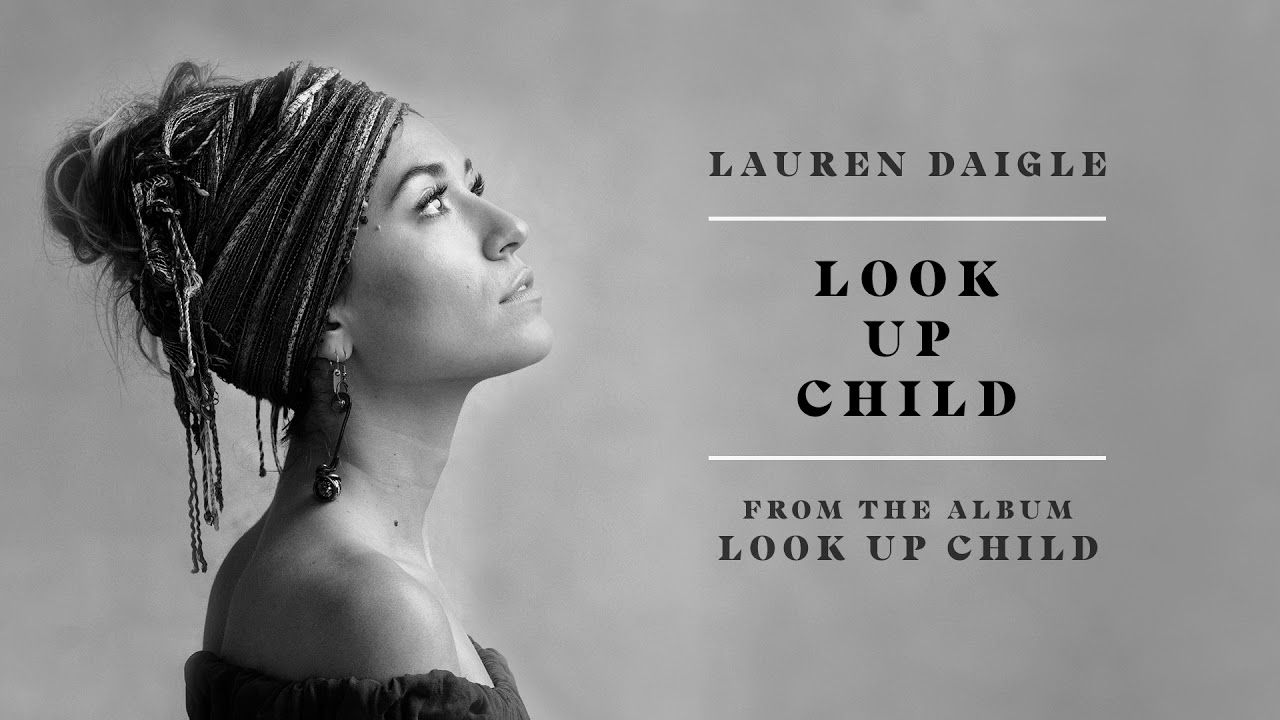Episode 49: A Pirate Looks At Forty
I celebrated another turn around the sun this week. When I look back on my life, I'm grateful for the opportunities and blessings bestowed upon me. I've been fortunate to live in beautiful cities in the US and abroad, work in dynamic and innovative industries, and built wonderful professional and personal relationships that have weathered time and transcended geography. I've packed a lot of life into my time on this planet. In many ways, I feel like A Pirate (who) Looks At Forty , and Jimmy Buffet's lyrics resonate. I'm optimistic the future will bring an abundance of continued adventure and hopeful for love and happiness. In the words of Matthew McConaughey in the movie Dazed and Confused: "The older you do get, the more rules they are going to *try* to get you to follow. You gotta just keep livin', man. L-I-V-I-N!" Onward and upward!
POLITICS
President Biden celebrated 100 days in office this week. According to the latest Washington Post-ABC News poll , 52% of adults say they approve of Biden's job, compared with 42% who disapprove. That's better than former President Donald Trump's 45% rating at the same time during his first 100 days in office, but worse than the ratings of 62% and 63% for former Presidents Barack Obama and George W. Bush, respectively. Biden's approval rating is the second-worst at this point in the president's first 100 days since 1974 when Gerald Ford became president after Richard Nixon's resignation.
The president earned his highest marks for handling the coronavirus pandemic, which garnered 58% approval, but he lags on immigration and border security—with only 34% and 35% support on those issues, respectively. At least two-thirds of Americans also said they were very or extremely concerned with gun laws (74%), healthcare (73%), the nation's infrastructure (68%), and illegal immigration (67%). Many Americans said they favor Biden's proposed tax increases on families earning over $400,000 annually (63%) and corporations (56%) to pay for his proposed $2 trillion infrastructure plan, which about 49% of respondents said they support.
One thing is clear. President Biden is eager and willing to spend money. In front of a joint session of Congress , Biden pitched his $1.8 trillion American Families plan, which includes funds for free preschool and two years of free community college, as well as hundreds of billions in financial aid for parents. Combined with the $2.3 trillion American Jobs Plan, and the $1.9 trillion American Rescue Plan, the White House has passed and proposed more than $6 trillion in spending in the first 100 days in office. Biden said the federal government needs to play a more prominent role in the economy because "trickle-down economics has never worked." Republican Senator Tim Scott delivered the rebuttal to Biden's speech on Wednesday.
Below is a snapshot of the $6 trillion in spending proposals:
I. American Rescue Act (passed), $1.9 trillion, allocates money for vaccines, schools, small businesses, and anti-poverty programs such as an expanded child tax credit that will mean new monthly payments to many parents. No GOP member voted in favor, saying that the package is too broad and only 9% of the funds going directly toward COVID-19 relief. Highlights of the bill are as follows:
-
Direct payments to individuals and expanded unemployment insurance, $656 billion
-
State and local fiscal recovery funds, $362 billion
-
Education and childcare, $211 billion
-
Healthcare, $86 billion
-
Other programs, $60 billion
-
Assistance to individuals and families, $56 billion
-
Transportation $40 billion
Who Pays the Tab?
It's unclear, but it will undoubtedly be in the form of higher taxes.
II. American Jobs Plan (proposed), $2.3 trillion, designed to fix the nation's crumbling roads and bridges, create green economy jobs, and tackle climate change. Highlights of the plan are as follows:
-
Transportation, $626 billion ($174 billion for electric charging stations; $115 billion repair roads and bridges; $85 modernize public transit, $80 billion passenger and freight rail; $25 billion ports, and airports; $20 billion redresses "historic inequity")
-
Home care, $400 billion (home care would become more accessible under Medicaid, and home care providers would receive a pay increase)
-
Buildings, $360 billion ($213 billion on building or refurbishing two million subsidized homes to update their energy uses; similar measures would be taken in schools and Veterans Affair buildings, while $25 billion would go to build more child care centers)
-
Manufacturing, $300 billion (boost American production of high-tech goods, with capital access programs and development priority for rural and minority communities)
-
R&D, $180 billion (towards green and cleantech industries and innovation)
-
Water, $111 billion (improve quality of nation's water supply)
-
Digital, $100 billion (100% national broadband coverage, complete with revamped internet prices)
Who Pays the Tab?
President Biden has proposed 15 years of higher corporate taxes, which would generate $2 trillion. The tax rate go up to 28% from 21%. That is still lower than the 35% that existed before the 2017 Trump Tax Cuts, but it would put the US back toward the top of the pack among major economies. Higher tax rates reduce the return on investment, so business groups say companies might be less likely to build factories or make other investments in the US. Some projects that make sense at a 21% tax rate won't make sense at a 28% rate. The Biden administration urges other countries to cooperate with it to set a global minimum corporate tax rate. Without such an agreement, non-U.S.-based companies could have an advantage over US-based firms.
Who is *really* paying for this tax increase? Many tax experts say most of the burden falls on the owners of capital , such as corporate shareholders. That can get reflected in stock prices. Some of the load gets passed on to the public at large. That can either happen through lower wages or higher prices than would otherwise be the case. Those workers and shareholders include some people making under $400,000, the threshold below which Mr. Biden has promised no tax increases.
Republican Counter Plan
Senate Republicans unveiled a $568 billion infrastructure proposal to counter the $2.3 trillion plan from the Biden administration. The GOP plan would be financed with user fees on electric vehicles and repurpose state and local relief passed as part of prior COVID relief bills:
-
$299 billion for roads and bridges
-
$61 billion for public transit
-
$44 billion for airports
-
$20 billion for railways
-
$17 billion for ports and inland waterways
-
$14 billion for water storage
-
$13 billion for safety measures
III. American Families Plan (proposed), $1.8 trillion plan, $1 trillion in spending + $800 billion in tax credits, to fund Democratic priorities, including billions of dollars on child care, prekindergarten, paid family leave, and tuition-free community college. Highlights of the plan are as follows:
-
Tax relief for families with children, $800 billion (extends the expanded child tax credit from Biden's Covid-19 relief package until 2025 and permanently raises Affordable Care Act tax credits to lower health insurance costs for millions of Americans)
-
Childcare, $225 billion (low and middle-income families would spend no more than 7% of their income on child care)
-
Paid Leave, $225 billion (aid for workers with new children or a family illness, offering up to $4,000 for 12 weeks)
-
Universal preschool, $200 billion (three and four-year-olds would be eligible for universal, free preschool)
-
Free community college, $109 billion (two free years for community college and funding for historically black colleges and other institutions serving minorities)
Who Pays the Tab?
Biden proposes paying for the plan via taxes on the rich. The proposal seeks to raise $1.5 trillion over a decade via higher taxes on the top 1%. The Biden tax plan would raise levies on capital gains and ordinary income and increase tax audits for those earning more than $400,000 a year. Biden's tax plan would raise the top income tax rate to 39.6%. That was the highest rate before the 2017 Tax Cuts and Jobs Act, which lowered it to the current 37%. The 39.6% rate would apply to the top 1% of Americans.
Biden’s tax plan would raise the top tax rate on long-term capital gains to 39.6% — the same rate as their wages. (Including a 3.8% Medicare surtax, they would pay a 43.4% top rate.) It would increase from the current 20% (or, 23.8% including the surtax on net investment income). The policy applies to taxpayers with an annual income of more than $1 million — the top 0.3% — who sell stocks, bonds, and other assets held in taxable accounts for a gain. According to a Tax Foundation analysis, investments account for more than 40% of income for taxpayers who make at least $1 million a year.
Also, the so-called “death tax” would change and heirs would have a tax liability on the step-up in basis of assets transferred at death. Essentially, the appreciation of any unsold assets — also known as unrealized gains — would be subject to capital gains tax upon the owner's death. (Again, this would be as high as 43.4% for the wealthiest households.)
According to the White House, family-owned businesses and farms would get an exclusion — they wouldn't have to pay tax when the company or farm is passed to heirs who continue to run the business.
The White House would also allocate additional resources to the IRS to enhance tax audits of households with more than $400,000 of income. Audit rates on those making more than $1 million per year fell 80% between 2011 and 2018, according to IRS data cited by the White House, which said its enforcement plan would raise $700 billion over a decade.
ECONOMY
Economic output grew at a 6.4% annualized rate in the first three months of the year, the Commerce Department said yesterday. Now, the US economy is less than 1% off its pre-COVID peak , clear evidence of a "V"-shaped recovery. Personal consumption grew 10.7%, the second-fastest pace since the 1960s. Just a year ago, the economy was sharply contracting—output in the second quarter fell by a record annual rate of 31.4%—and the unemployment rate soared to 14.8% last April, a post-World War II high. The S&P benchmark index finished yesterday 87% above its March 2020 bottom, fueled by the Federal Reserve's loose monetary policy, Congress' spending binge, vaccinations, and the US economy's reopening.
The stock market continues to set new records. (I feel like I can copy and paste that sentence in each newsletter.) Halfway through earnings season, S&P 500 companies have reported the strongest earnings growth in more than a decade. Big Tech continues to set the pace and reinforce a shifting economy to all things digital, with Google and Amazon posting record profits. Even dinosaurs like McDonald's joined the party announcing sales returned to pre-COVID levels. Joe Biden has been president for 100 days, and the S&P has gained more than 10% since the inauguration on Jan 20, making it the best first 100 days for stocks since FDR in 1933. After Biden, it’s JFK 9.27% (1961), George H.W. Bush 7.93% (1989), Donald Trump 5.32% (2017) and Barack Obama 2.77% (2009). For those counting at home, that's three Democrats and two Republicans. The average since 1929 is 3.8%.
Everyone is celebrating and taking bows for record GDP growth and stock market prices. However, thanks to Uncle Sam, low-level workers can make more money by staying home than working, and service and hospitality sectors are struggling to find hourly workers. The economy is on a sugar high, and everything looks rosy, but there is always a price to pay for indulgent behavior, and time will tell what that means for the US when the hand-outs vanquish and there’s a bill to be paid.
COVID
President Biden, the CDC, and most health officials urge Americans to stay vigilant around COVID health precautions. The CDC issued new guidelines that said it's now safe to exercise outdoors without a mask. (Uh, thank you, CDC, for such bold guidance.) The agency also said fully vaccinated people can now safely gather with other vaccinated people in small groups, but social distancing measures should remain, and everyone should wear a mask indoors.
I know there are varying beliefs about COVID, vaccines, and the role of government in health matters. The CDC and US government muddy the waters when they issue what feels like nonsensical directives. The pandemic is a serious matter, as evidenced by the 32 million Americans who have contracted the coronavirus and the 570,000 who have died from it. However, at this point, 237 million doses of the vaccine have been administered, with 100 million US citizens fully vaccinated. Studies show that the current vaccines are effective against the multiple variants, and vaccinated people are at low risk for passing the virus to other non-vaccinated people. With these facts in hand, why are vaccinated people still required to wear masks and social distance? Such conservative guidance raises doubt in people not vaccinated about the vaccine's efficacy and offers a disincentive to getting it.
OTHER
The NFL commenced it’s annual NFL draft yesterday. The Jacksonville Jaguars selected Trevor Lawrence, QB of Clemson, as the number one pick. Lawrence has partnered with Blockfolio, a crypto investment app, to invest his estimated $22,630,055 signing bonus in bitcoin, ether, and yes, dogecoin. The announcement was part of a multi-year endorsement agreement Lawrence reached with the cryptocurrency company. A spokesperson for the Blockfolio said that Lawrence’s signing bonus is already worth more than it was on Friday. Blockfolio competes with apps like Coinbase and is trying to reach a younger client base by partnering with Lawrence. FTX, Blockfolio’s parent company, paid $135 million in early April to secure the naming rights to the Miami Heat’s arena for the next 20 years.
I. Below are the articles I found interesting the past week:
II. Stats that made me go WOW!
III. Name that Tune!
As I write this email, I am listening to “A Pirate Looks At Forty” by Jimmy Buffett.
James William Buffett is an American singer-songwriter, musician, author, actor, and businessman. He is best known for his music, which often portrays an “island escapism” lifestyle. Born in Pascagoula, Mississippi, Buffett spent part of his childhood in Mobile, Alabama, and later Fairhope, Alabama. As a child, his grandfather exposed him to sailing, and these experiences would influence his music. Buffett began playing the guitar during his first year at Auburn University before transferring to Pearl River Community College and later the University of Southern Mississippi, where he received a BA in history. After graduating from college, Buffett worked as a correspondent for Billboard magazine in Nashville, Tennessee.
Buffett began his musical career in Nashville during the late 1960s as a country artist and recorded his first album, the country-tinged folk-rock record Down to Earth , in 1970. Fellow country singer Jerry Jeff Walker took him to Key West on a busking expedition in 1971. Buffett fell in love with the area and moved to Key West, and began establishing the easy-going beach-bum persona for which he is known. Buffett combined country, rock, folk, calypso, and pop music with tropical lyrics for a sound that Buffett describes as “drunken Caribbean Rock-n-Roll.”
Buffet has released over 30 albums. Eight are Gold, and nine are Platinum or Multiplatinum. He and his Coral Reefer Band played on the White House lawn for then-President Bill Clinton. Fans of Buffett are “Parrot Heads,” and his die-hard patrons will tour with the band and attend various concert locations, similar to “Dead Heads” who followed the Grateful Dead. Buffett is an avid pilot and owns a Dassault Falcon 900 that he often uses for his nonstop concert schedule.
Aside from his music career, Buffett is also a bestselling author and was involved in two restaurant chains, Margaritaville Cafe and Cheeseburger in Paradise. Buffett is one of the world’s wealthiest musicians, with a net worth of over $500 million.
If you enjoyed the newsletter, please add a friend and share it on social media!
Related articles.


